Prestations de service
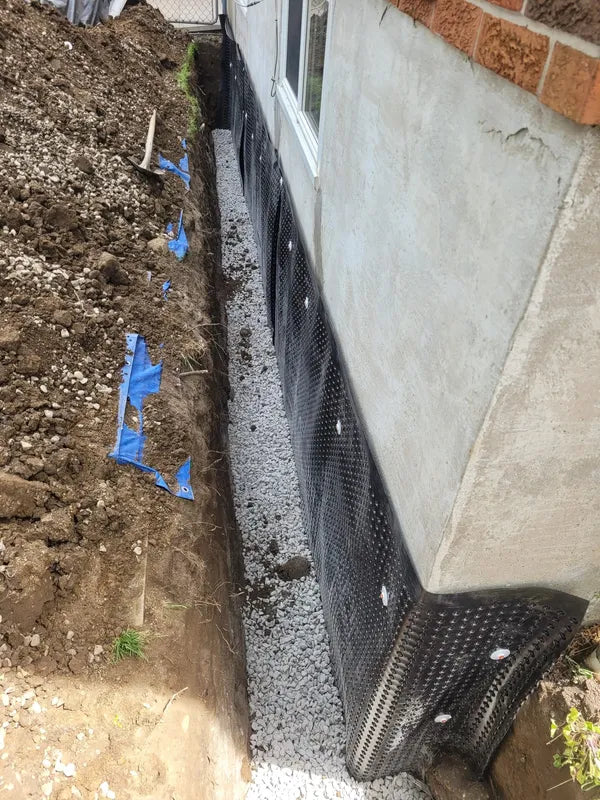
Étanchéité
Notre protocole d'imperméabilisation est soigneusement conçu et est garanti d'une qualité primordiale. Une fois que les murs de fondation et la semelle sont exposés, le mur est ensuite lavé, permettant une bonne adhérence pour le crépi de béton. Toutes les fissures et les vides de la fondation sont ensuite compactés via du ciment hydraulique, où toute la surface du mur est ensuite recouverte d'un crépi de béton.
Nous appliquons ensuite une membrane de caoutchouc BITUTHENE ® sur le mur de fondation au-dessus de la semelle. Une enveloppe/natte de drainage en plastique DELTA®-MS est ensuite ajoutée au mur de fondation, jusqu'au niveau de la semelle. Une nouvelle tuile suintante est ensuite installée et reliée au point de drainage correspondant et enveloppée de gravier propre de ¾ po. Tout le sol est remblayé et compacté, empêchant les tassements de s'accumuler. Nous enlevons ensuite tous les débris du site. Tout matériau de surface fini est réinstallé, y compris le béton, l'asphalte, la pierre de verrouillage, etc.
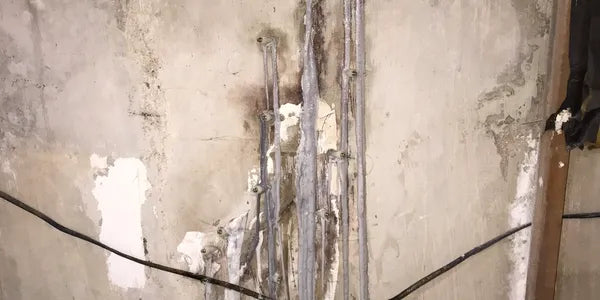
Injections
En ce qui concerne les injections, les fissures sont d'abord nettoyées. Lors du nettoyage, des trous sont percés à 8" de distance, à 2,5" de la fissure et à 7" de profondeur à un angle de 40º vers la fissure d'un côté. Inversement, de l'autre côté, la même procédure est exécutée. Cependant, les trous sont percés à 8" intervalles entre les distances des trous de l'autre côté pour éviter toute intersection pour une efficacité maximale.
Les trous nouvellement percés sont efficacement nettoyés avec un aspirateur complet et un remplissage ultérieur avec de l'eau pour permettre à nos matériaux de former une liaison propre et solide avec le béton. Une fois que tous les débris dans les trous forés sont dégagés, nous y injectons nos matériaux pour sceller la fissure.
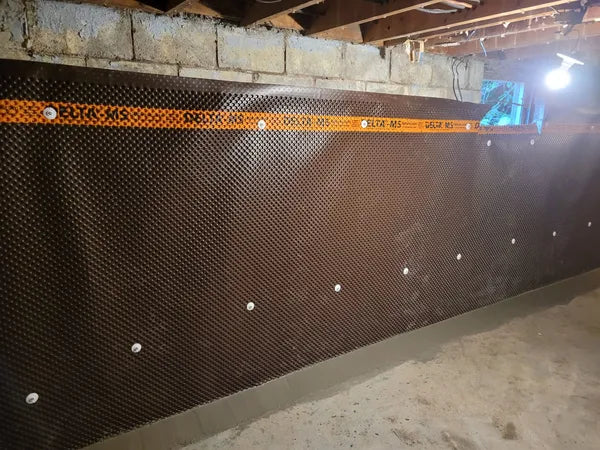
Intérieur extérieur
Nous pouvons effectuer notre service d'étanchéité à l'intérieur ou à l'extérieur selon ce que les conditions météorologiques permettent ou même la préférence du client. L'imperméabilisation extérieure consiste en le remplacement de la tuile suintante, et côté intérieur, elle comporte le nettoyage et l'installation d'une nouvelle tuile suintante ainsi qu'un système de sous-pompe. Cependant, notre service d'injection ne peut être effectué qu'à l'intérieur.
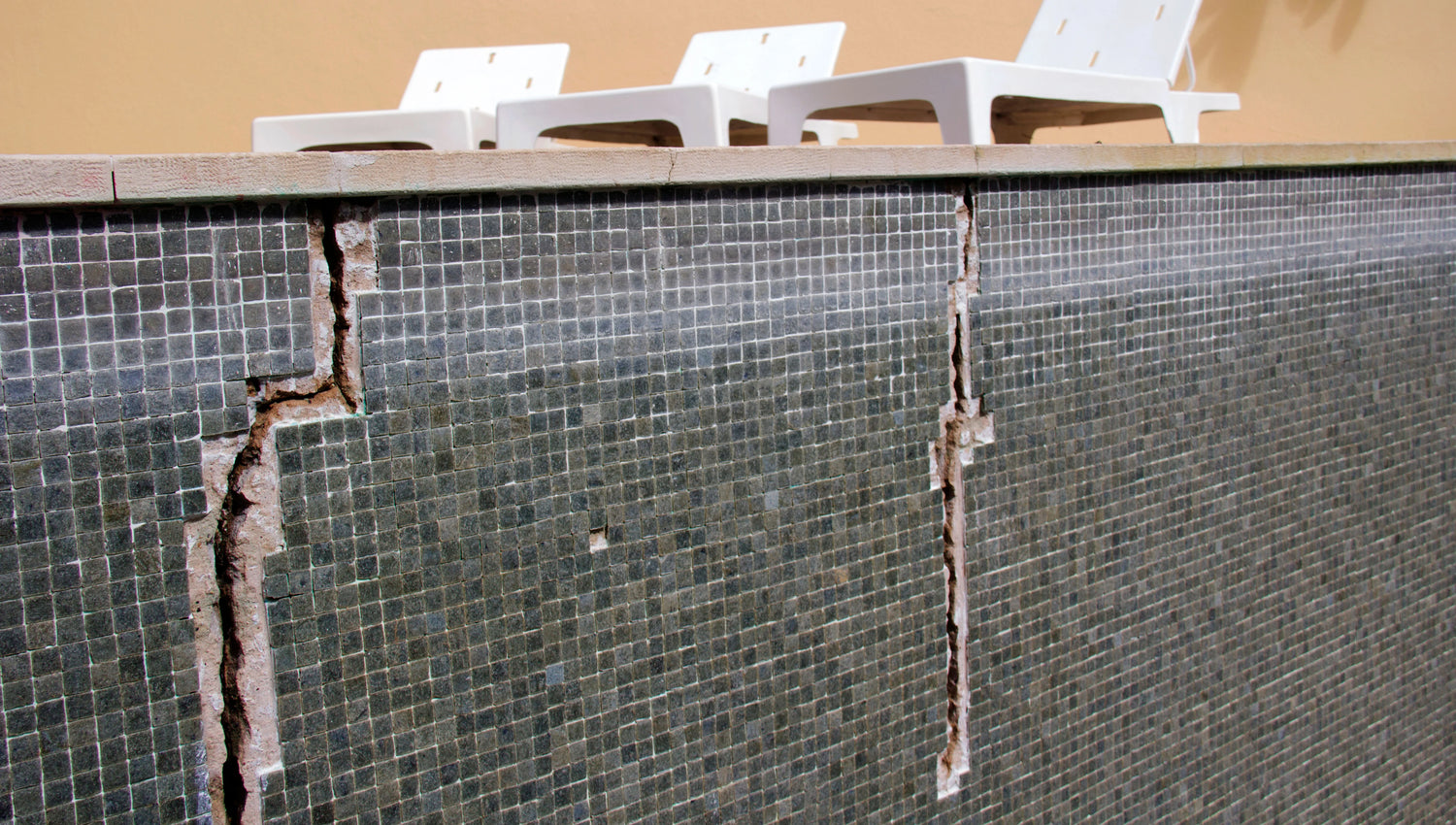
Étanchéité de piscine
Chez Lympia Contracting, nous sommes spécialisés dans la réparation et l'imperméabilisation des piscines en béton, garantissant leur longévité et leur fonctionnalité. Notre équipe de techniciens qualifiés utilise des techniques éprouvées et des matériaux de pointe pour résoudre efficacement les problèmes liés à la piscine. En ce qui concerne les réparations, nous évaluons méticuleusement l'état de la piscine en béton, en identifiant les zones préoccupantes telles que les fissures, les fuites ou la détérioration. Grâce à notre expertise, nous réparons et restaurons habilement la structure de béton, en assurant son intégrité. De plus, nous comprenons l'importance de l'imperméabilisation pour éviter les fuites d'eau et les dommages ultérieurs. Nos solutions d'étanchéité comprennent l'application de mastics et de revêtements de haute qualité qui créent une barrière protectrice contre la pénétration de l'eau, renforçant la durabilité de la piscine. Qu'il s'agisse de réparer des fissures ou d'appliquer des mesures d'imperméabilisation, notre approche méticuleuse et notre souci de la qualité garantissent que votre piscine en béton reste dans un état optimal, vous offrant des années de plaisir et de détente.
How do Basement Leaks Occur?
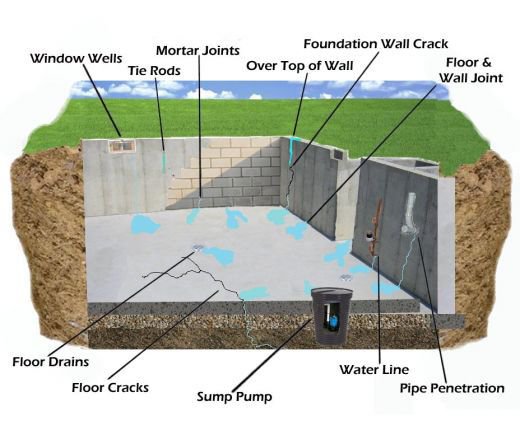
Poor foundation waterproofing
In some cases, basement leaks occur due to inadequate waterproofing of the foundation. If the exterior foundation walls were not properly sealed or waterproofed during construction, water can seep through cracks or gaps and enter the basement. Additionally, over time, the waterproofing materials may deteriorate, leading to leaks.
Faulty or inadequate drainage systems
Effective drainage systems are essential for preventing water accumulation around the foundation. If the gutters, downspouts, or exterior grading are faulty or inadequate, rainwater or melting snow can collect near the foundation walls. Over time, the hydrostatic pressure from the accumulated water can cause leaks through cracks or weak points in the basement walls or floor.
Sump pump failure
Sump pumps are installed in many basements to prevent water accumulation by pumping out excess water from the sump pit. However, if the sump pump fails to function correctly due to power outages, mechanical malfunctions, or improper maintenance, it can lead to basement leaks. Without an operational sump pump, water may build up in the basement and result in flooding or seepage through cracks or weak points in the walls or floor.
Surface water infiltration
When heavy rainfall or melting snow exceeds the capacity of the surrounding soil to absorb and redirect water away from the foundation, surface water infiltration can occur. This can happen if the ground slopes towards the basement or if there is insufficient grading around the property. The excess water can find its way into the basement through cracks, gaps, or even windows and doors that are not properly sealed.
Window or window well leaks
Improperly sealed or poorly maintained basement windows or window wells can be another source of water infiltration. If the windows are not adequately sealed, or if the window wells do not have proper drainage or covers, rainwater or melted snow can seep through gaps or accumulate in the wells. This can lead to leaks around the windows or even enter the basement through the window frames.
Hydrostatic pressure from the groundwater
When the water table rises due to heavy rains, nearby bodies of water, or excessive irrigation, hydrostatic pressure can exert force on the basement walls and floor. This pressure can cause water to seep into the basement through cracks, porous concrete, or weak points. Basements that are below the water table level or are located in areas with high groundwater conditions are particularly susceptible to this type of leakage.
Condensation and moisture buildup
Inadequate ventilation and high humidity levels in the basement can result in condensation and moisture buildup, leading to leaks. If the basement lacks proper airflow or insulation, moisture can accumulate on walls, floors, or pipes, eventually causing water damage. Condensation can also form on cold surfaces, such as windows or pipes, and drip onto the basement floor, contributing to the overall moisture problem.
Cracks in basement floors
Similar to cracks in foundation walls, cracks can also develop in the basement floor over time. These cracks can occur due to settlement, shifting soil, or the natural aging of the building. When it rains or when the water table rises, water can seep through these cracks and lead to basement leaks. Regular inspection and repair of basement floor cracks are important to prevent water infiltration.
Exterior landscaping and grading issues
Improper landscaping and grading around the exterior of the house can contribute to basement leaks. If the ground slopes towards the foundation, it can direct water towards the basement walls instead of away from the property. This can result in water pooling near the foundation and finding its way into the basement. It's important to ensure proper grading and landscaping techniques are employed to promote water drainage away from the foundation.
What are injections?
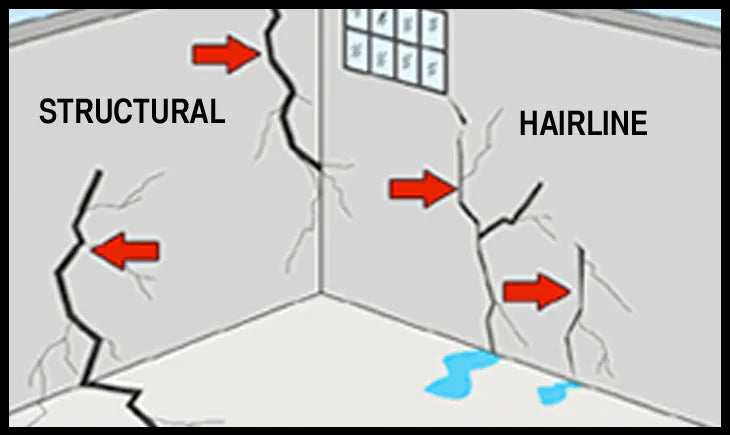
Concrete basement injections are used for crack repair
Concrete basement injections are a common method employed to repair cracks in basement walls or floors. This technique involves injecting a specialized liquid or epoxy material into the crack, which fills the void and helps restore the structural integrity of the concrete.
They prevent water infiltration
One of the primary purposes of concrete basement injections is to prevent water infiltration through cracks. The injected material creates a barrier that seals the crack and prevents water from seeping into the basement, thereby protecting the interior space from potential water damage.
They enhance the structural strength of the concrete
Concrete basement injections not only seal cracks but also help enhance the overall structural strength of the concrete. By filling the voids within the crack, the injected material provides additional support, preventing further cracking or deterioration.
Different injection materials are available
Various injection materials are available for concrete basement injections, including epoxy resins, polyurethane foam, or acrylic gels. The choice of material depends on factors such as the type of crack, its size, and the desired level of flexibility or rigidity required for the repair.
Injections can be done from the interior or exterior
Concrete basement injections can be performed from either the interior or exterior of the basement, depending on the accessibility and location of the crack. Interior injections are more common and involve drilling holes into the crack from inside the basement, while exterior injections require excavation around the foundation to access the crack from outside.
They are a cost-effective repair method
Concrete basement injections are generally considered a cost-effective repair method compared to more extensive alternatives like full foundation replacement. By targeting the specific crack and repairing it directly, injections can save both time and money while effectively addressing the problem.
Proper preparation is crucial for successful injections
Before performing concrete basement injections, proper preparation is essential for optimal results. This includes cleaning the crack to remove debris, applying a primer or bonding agent, and ensuring the crack is properly aligned and open for injection.